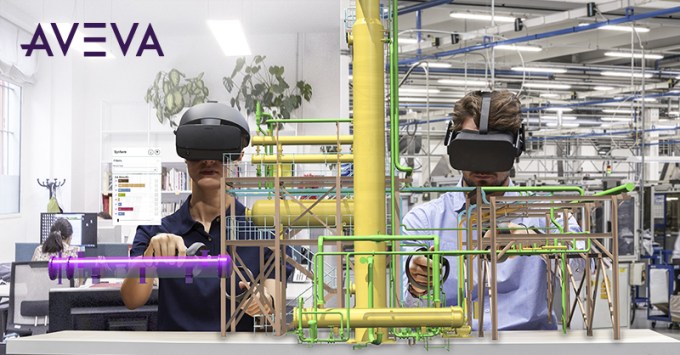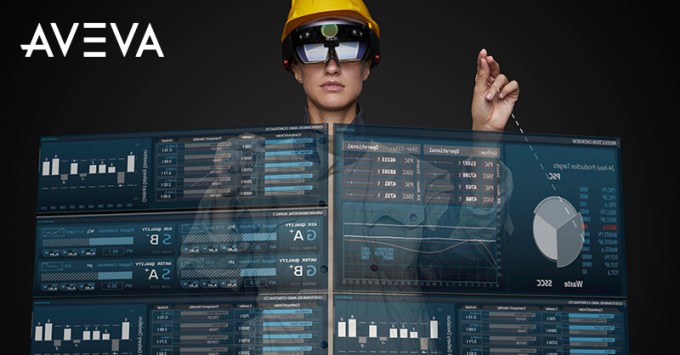“Gamification has been a mainstay of industrial training for years, but the application of artificial intelligence to new technologies such as AR, VR and XR will take that to the next level,” says AVEVA Chief Technology Officer Andrew McCloskey
The summer of 2016 forever altered the way we play video games. Across parks and lakes, through shopping malls and into the neighbor’s garden, we captured and then trained tiny little creatures, teaming up with friends and strangers to send them into battle against opposing armies. Along the way we got fitter, learnt about ourselves, developed an intuitive understanding of real-world competitive strategies, and even helped kids with autism. With over a billion global downloads in less than six months, it appeared that few people could resist the allure of Pokémon Go.
Except that the creatures weren’t real. That particular mobile game was a prescient indicator of just how much augmented reality (AR), a set of technologies that superimpose digital data and images on the physical world, can achieve in everyday life. The principles and theories behind games of these kinds — a process appropriately referred to as gamification — have since been applied across several other contexts to teach conceptual and abstract lessons, simplify complex tasks, promote staff productivity, and generally improve user engagement.
As it turns out, the pleasure we get from playing a game can be harnessed for self-improvement. Scientists have shown how the chemicals behind this pleasure system, endorphins and dopamine, can improve motivation, prompt repetition, and enhance learning. Taking part in challenges or competing to win a skills badge, for example, can improve employees’ retention, expand their knowledge, and promote cooperation across organizations.
With end results of that sort, it makes sense that AR is being adapted to industries as varied as social media and nuclear energy, alongside other gamification technologies such as virtual reality and extended reality, which deal with digital content that conveys a rich experience and immersive environment.
Within these industrial environments, gamification helps simplify the transfer of complex knowledge for field and plant operators or to general personnel. So far, so 2016.
Artificial intelligence transforms training into learning by doing

Image Credits: AVEVA (opens in a new window)
The global gamification market is forecast to grow by 24% annually to USD37 billion in 2027 from USD6 billion in 2019. Artificial intelligence (AI) will play a major role here.
Virtual reality simulation was used to train operators of heavy machinery for years now. Such Operator Training Simulators (OTS) have allowed operators to train on a computer in an identical environment to the control room, creating a realistic virtual learning setting so qualified personnel can react appropriately in any given situation. But just as brick mobile handsets have evolved into touchscreen smartphones, the simulator is now a high-fidelity OTS system that combines dynamic process simulations, virtual control systems and replicated interfaces to match the look, feel and behavior of the actual plant — and can be deployed even before a plant is built.
When you fuse AI into these gamified training processes, you are able to leverage the principles of gamification in real time, moving from training to learning by doing. To do so, we use an Immersive Training System (ITS). This connects a high-fidelity process simulator with a virtual-walkthrough plant environment (often called a Digital Twin), so that any action within a virtual environment can be set to trigger the thermodynamically correct reaction at the plant in real-time. It’s now possible to pull together all the data from a plant — or indeed, from several plants — into a digital representation on a handheld tablet, and then activate a specific process at a single plant, perhaps after consulting in real-time with a colleague on the other side of the world.
The all-encompassing solution links together teams across the value chain — from control room operators and staff in the field to maintenance crew and other critical team members — teams can collaborate remotely across geographies and time zones to surface new solutions at unprecedented speed. In Pokémon Go terms, that’s like blazing through a gym battle together with supporters from around the world and then taking actual control of the real-world equivalent venue.
Lower costs, improved recovery times and other, unquantifiable benefits

Image Credits: AVEVA (opens in a new window)
Put another way, there’s no time lag or pausing industrial processes while waiting for an email response — each person can consult a range of AI-generated scenarios presented in a simplified, interactive format on their own device and act accordingly.
In industrial environments, AI-powered ITS simulators therefore reduce time-to-value, improve cost efficiencies and optimize return on investment. Depending on the company, the ITS can cut costs by 30 to 40%, reduce recovery times from shutdowns by 15 to 20%, and trim maintenance budgets by 1 to 3%, AVEVA data shows. Depending on the industry, some benefits simply cannot be quantified — such as avoiding human error in nuclear plant operations.
Putting the AI-powered Digital Twin to work can pay off in other ways. Pair it with a learning management system (LMS), and employees’ skill development can be managed and tracked. The program’s granularity and speed can help identify an individual’s strengths and weaknesses and allow for personalized learning paths to be developed — something that SHELL is exploring on the path to Industry 5.0.
From exposing procedure problems and plant control issues before start-up to collaborative real-world innovation in real time, AI is significantly expanding the applications for gamification. Yet, the adoption of AR and VR technologies are still in their infancy. As we move towards a future where humans and machines work side by side, gamification will quickly become the norm in industrial environments.